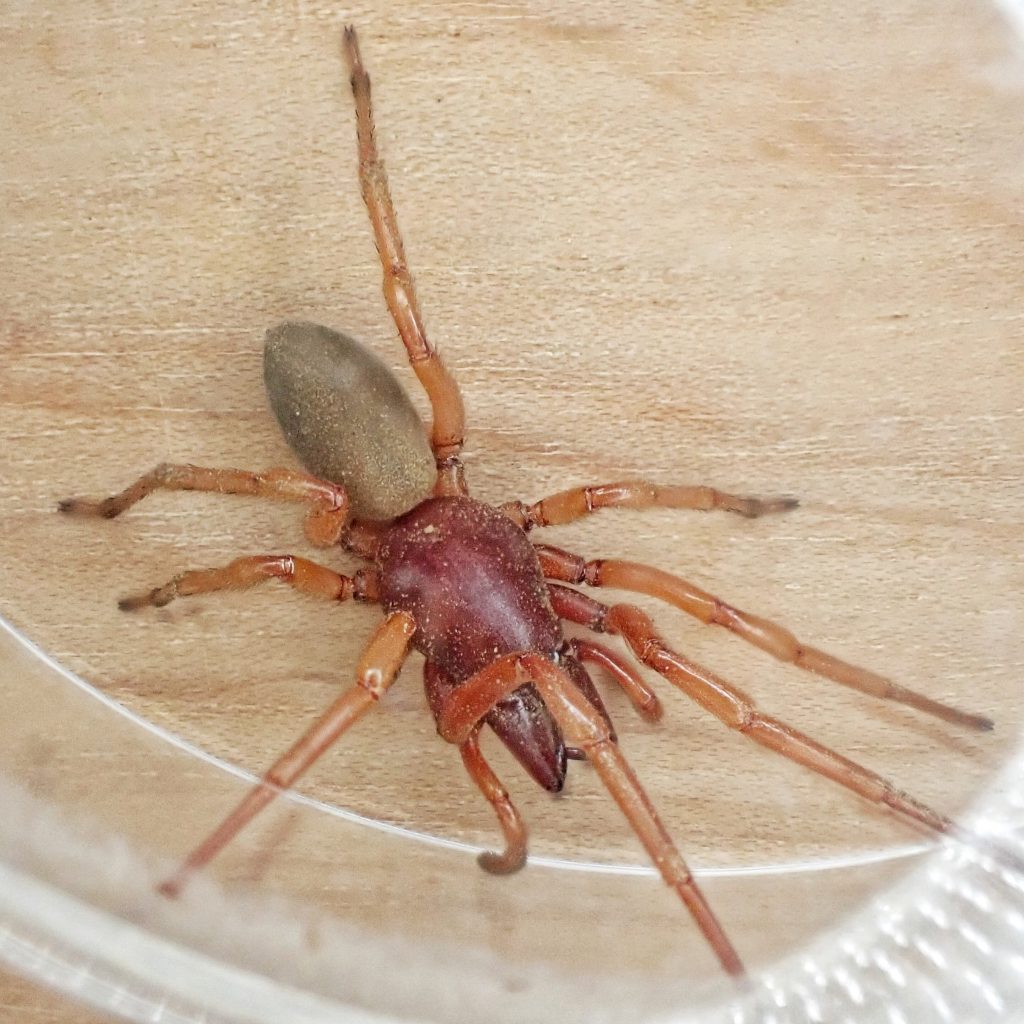
I thought it was fortuitous that I found a Woodlouse Hunter whilst working on my Oniscus asellus woodlouse post so I could pair the profiles. With its relatively large size, and contrasting greyish yellow abdomen and orangish red carapace and orange legs, this is one of the few spiders I can positively identify from a standing position. And up close it becomes even more obvious because of the massive chelicerae and fangs, which it uses to pierce the armor of the woodlice (suborder Oniscidea; also known as pillbugs, rolypolyies, sowbugs, slaters, and potatobugs, amongst other common names) that are its preferred prey, although they will also hunt other arthropods. They are not shy about displaying their armament and will stand with carapace tipped up and jaws wide if threatened.
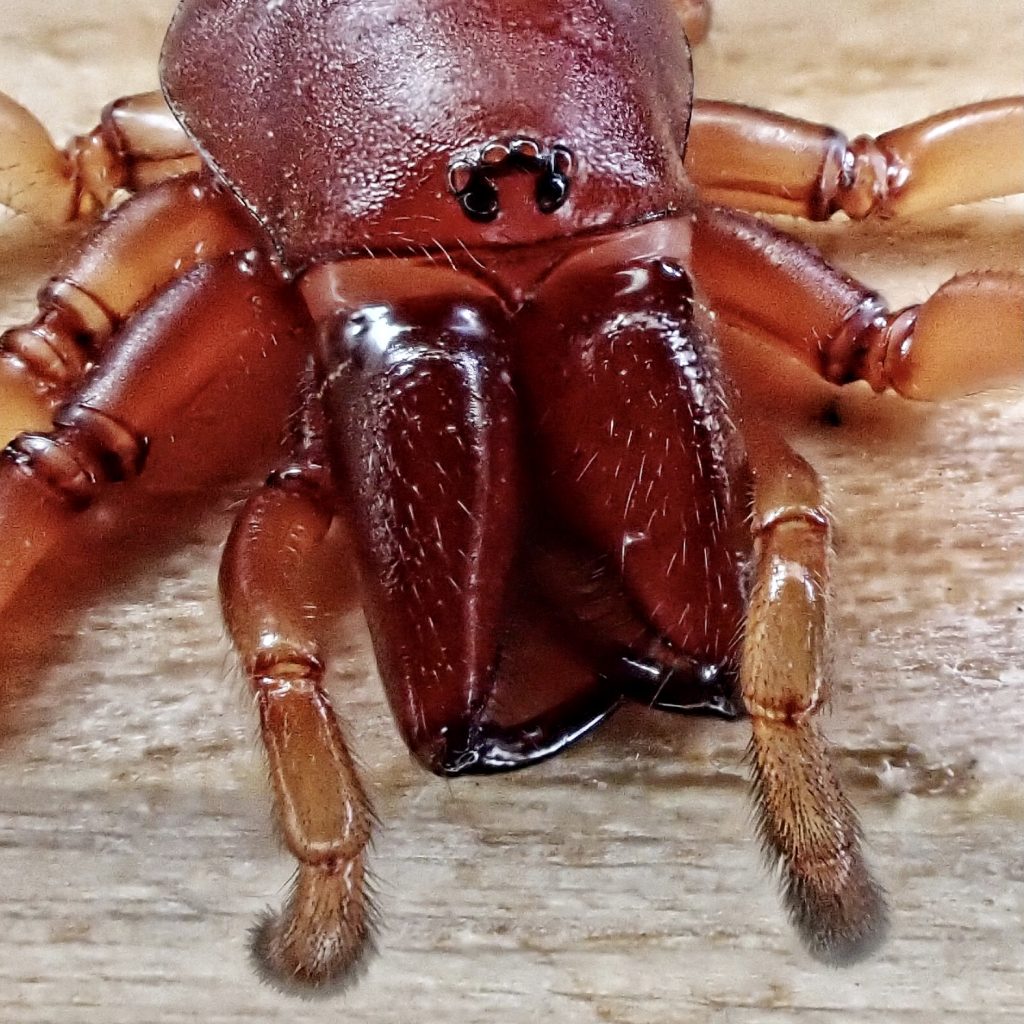
Though they are considered to be synanthropic, their close relationship with human habitations may simply be because the woodlice that are their preferred prey need the calcium rich (due to leaching from concrete sidewalks and foundations) soils that humans provide to strengthen their frequently moulted exoskeletons. Where the woodlice live, the Woodlouse Hunters follow. They have been known to come indoors, but despite their imposing appearance their bite is not medically significant to humans.
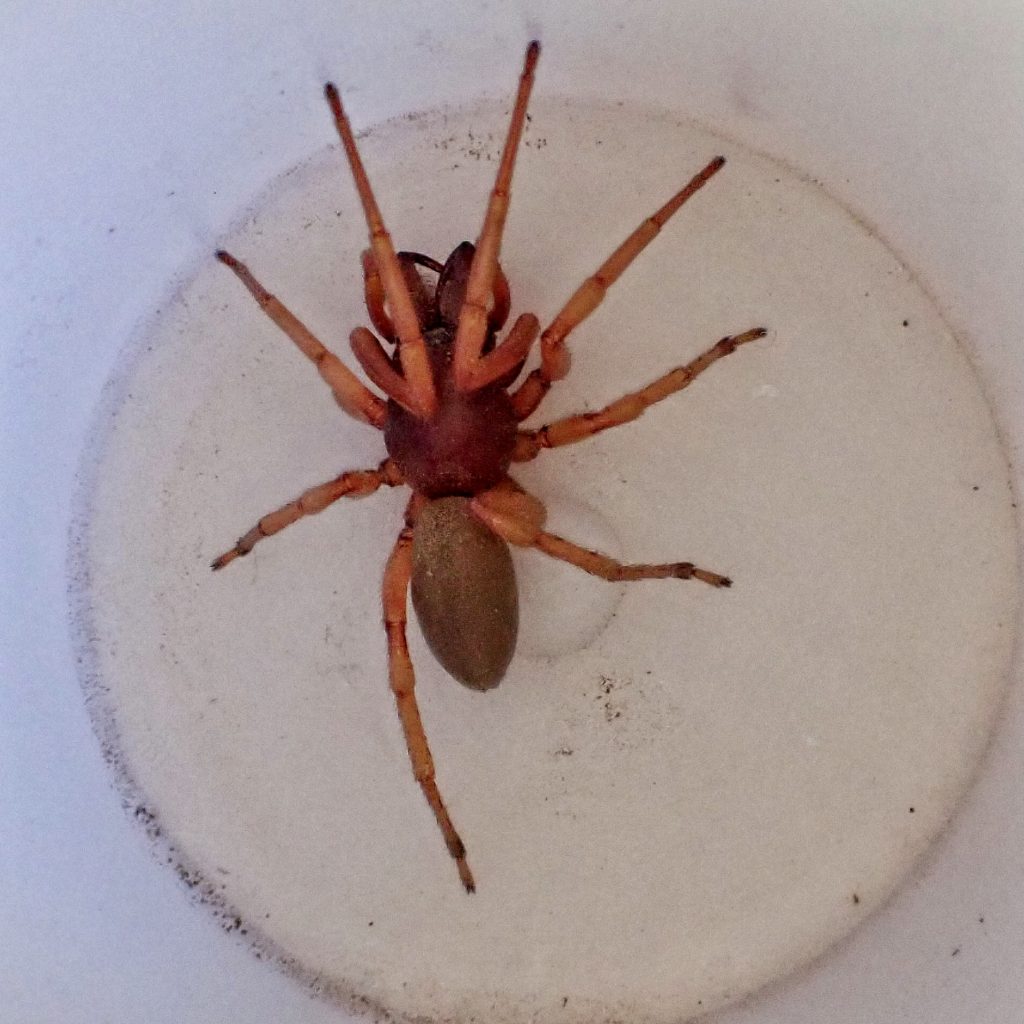
This is the only member of the family Dysderidae that is found in North America, and probably hitchhiked on a boat from Europe along with some introduced woodlice. They are nocturnal, prowling hunters, and only build webs to shelter their young, from which the mother apparently guards them until about a month after hatching. I’m guessing that with those jaws she is a formidable foe for anything trying to lunch on her younguns. How can you not love a spider with that kind of maternal instincts!
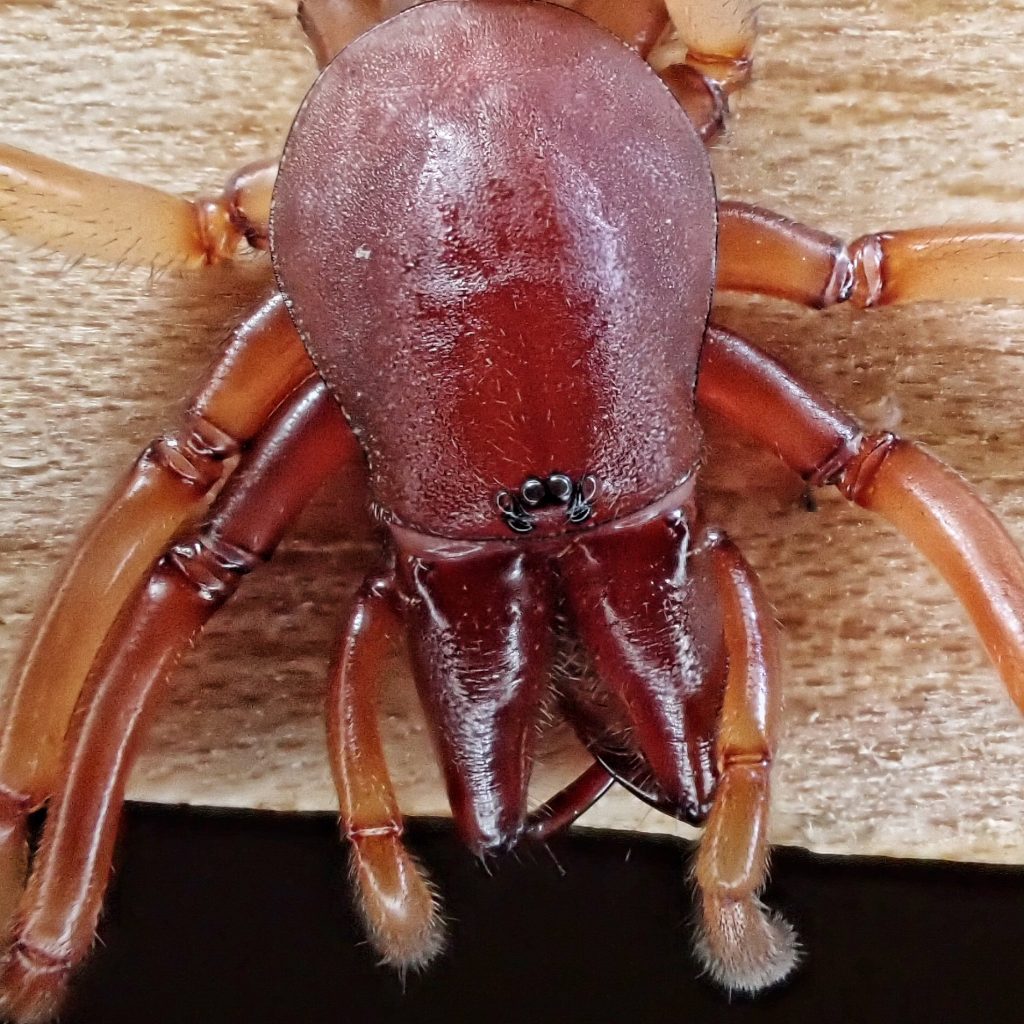
Description-Fairly large (body length 9-15mm) spider with orange red carapace, orange legs, unmarked yellowish grey abdomen, and very large chelicerae and fangs; it has six eyes that are arranged in a curved arch.
Similar species-Nothing really similar; the eye arrangement is unique, and nothing else that large has the same contrasting color scheme.
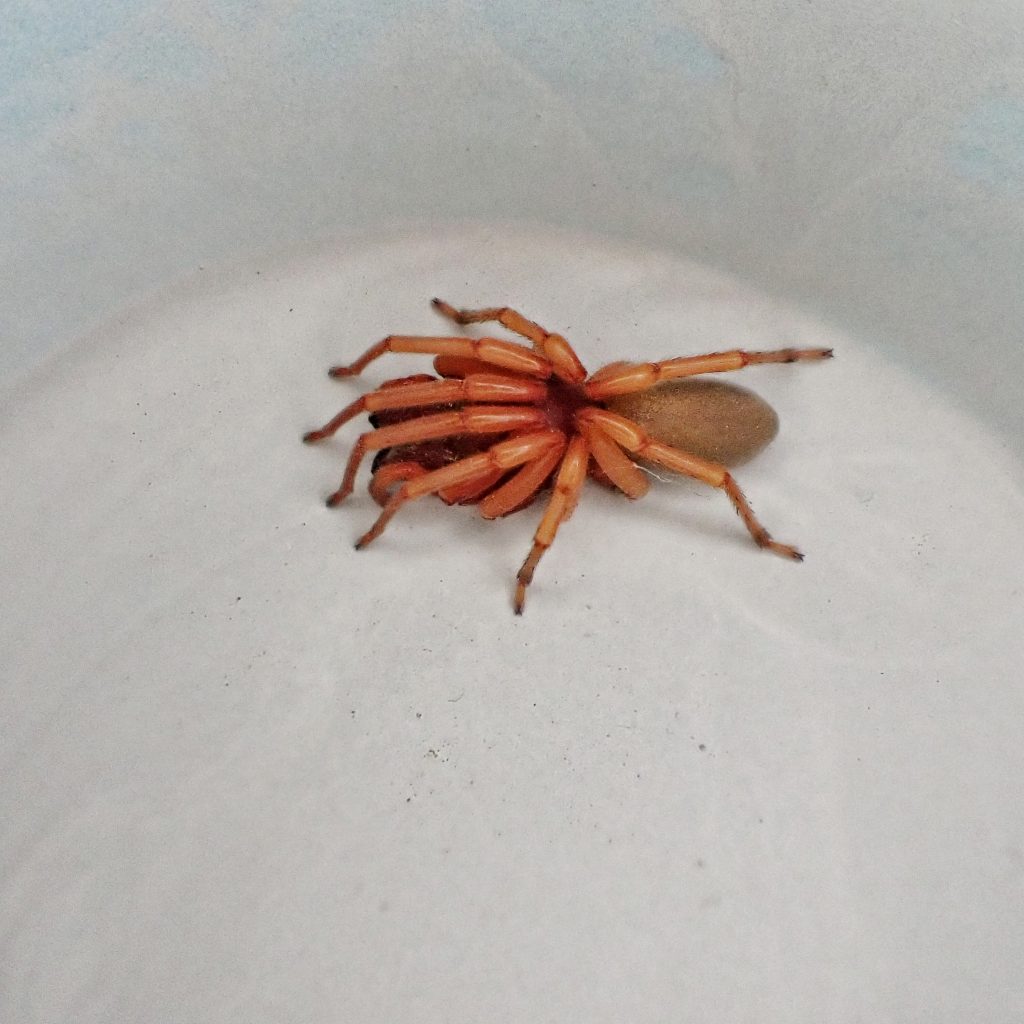
Habitat-More or less synanthropic, as is most of its quarry, although it can also be found in woods and fields on the outskirts of human habitations; found under boards, logs, stones, pavers, flowerpots
Range-Native to the Mediterranean, introduced on the east and west coasts of North America, now found continent wide; region wide in appropriate habitat, but seems to be more common (or at least more commonly found) west of the Cascades.
Eats-Woodlice (Oniscidea) of all families, but will also take other arthropods when woodlice are scarce.
Eaten by-Probably any arthropod, small mammal, or bird that eats spiders.
Adults active-Nocturnal; year around, but tends to follow its prey into deep cover during the coldest and driest times.
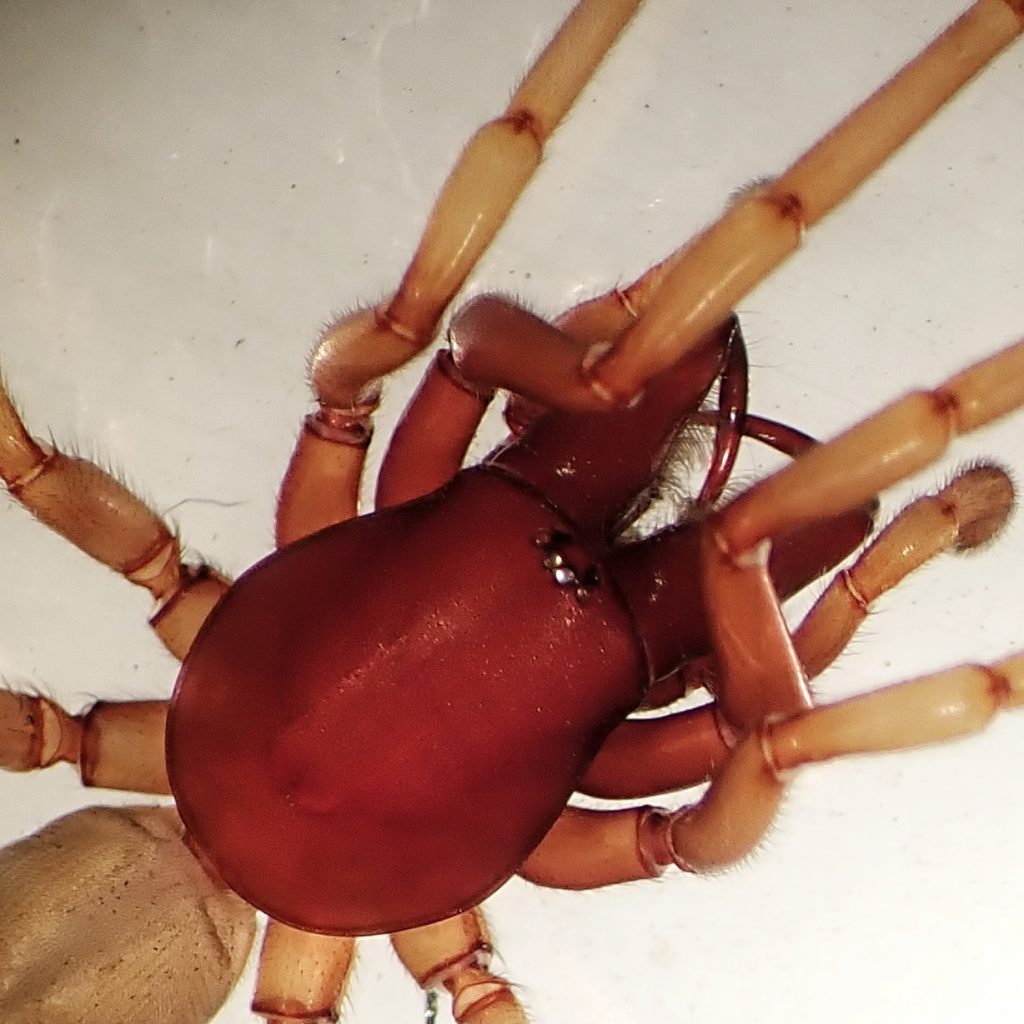
Life cycle-Courtship involves the male tapping on the front legs of the female with his own, while holding her jaws open with his own; unwanted advances may be met with attack; spherical egg sack is placed in a cocoon on the underside of a rock or other cover, with the female inside; eggs hatch in 3-4 weeks, but the hatchlings remain in the cocoon for another 4 weeks; reproductive maturity reached in 18 months, overall lifespan up to 4.5 years.
Etymology of names–Dysdera is from the Greek word for ‘quarrelsome’, and probably refers to its fierceness and/or its deadliness. The specific epithet crocata is from the Latin for ‘saffron/yellow’, and probably references the color of the abdomen.
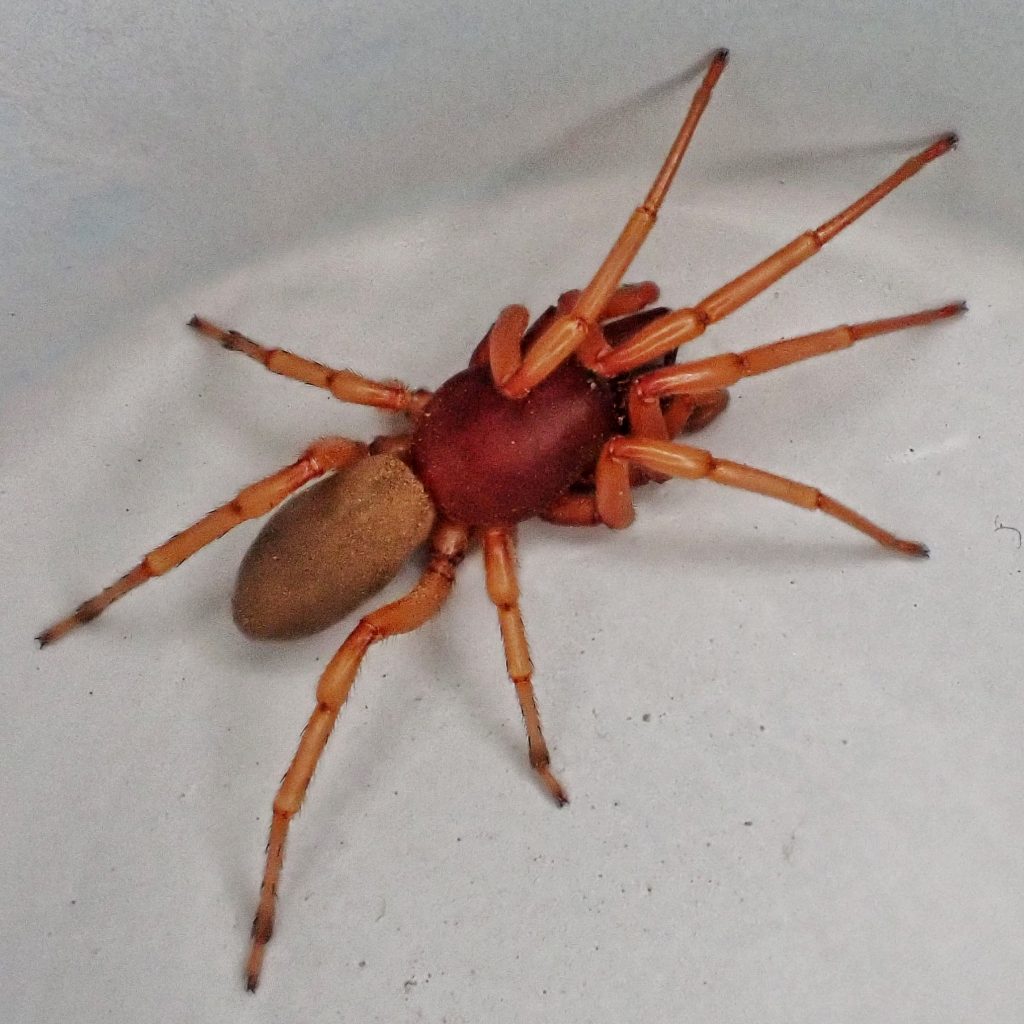
https://bugguide.net/node/view/3388
https://webdoc.agsci.colostate.edu/bspm/Arachnida%20%28Arachnids%29/Dysdera%20crocata.pdf
https://pubmed.ncbi.nlm.nih.gov/16574180/
http://spiderhugger.com/meet-spider-dysdera-crocata/
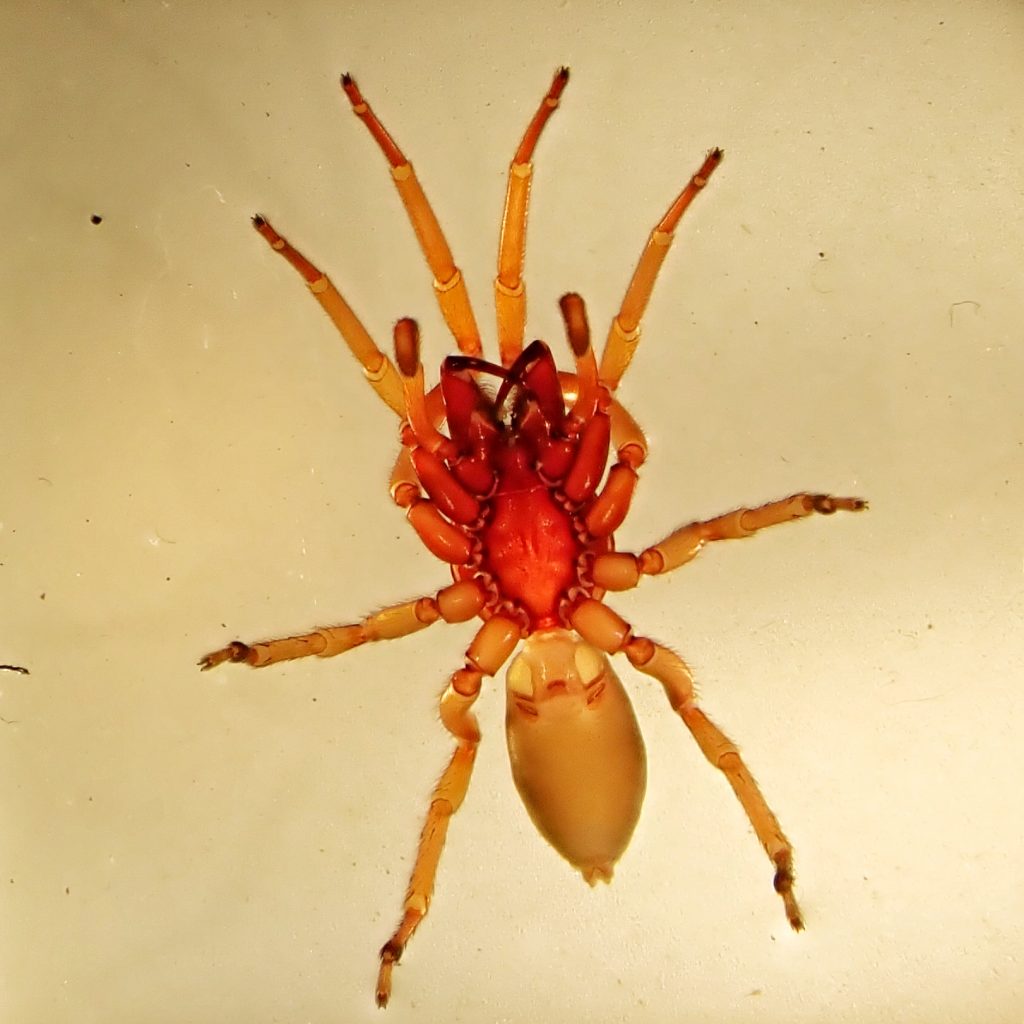
Nice writeup on a cool spider! They do have striking coloring.
In the Northeast, (PA) we also have Trachelas / Broad Faced Sack Spider … which looks very similar.
I found a spider in the house the other day, with the three color look, which I thought was a WLH but now I’m not so sure! I wish I took a photo before I let it go outdoors.
Thanks for telling us about that spider! That may be helpful for folks in the northeast.